This might seem a tough thing for a forest conservationist to admit: there are times when an invasive forest pest can’t be stopped.
There are times when you know it’s coming, and you can’t do anything about it. It will arrive in the forest, and trees will die.
They will die en masse.
It might seem a hopeless situation, to watch helplessly while the trees you’re trying to protect are dying.
But what if you could sell those trees for lumber before the pest arrived, and use the proceeds to save other trees?
After all, the trees are doomed anyhow, so this is one positive thing that could be done to benefit the forest.
That is the decision made at the Conservancy’s Woodbourne Forest Preserve in the case of the emerald ash borer. The ash borer was coming and the ash trees couldn’t be saved. Some trees were timbered to fund the protection of eastern hemlocks (the subject of yesterday’s blog).
It’s a tough choice made tougher by this important fact: one of the main reasons Woodbourne Preserve was established was to prohibit any logging on the property. When Francis Cope donated the preserve to the Conservancy in 1954, he envisioned a place that would be protected from chainsaws and logging trucks, forever.
But forever does not take into account the wave of invasive forest pests hitting North American forests. It does not account for the devastation wrought by the emerald ash borer.
Welcome to forest management, 2014 edition. Tough choices need to be made if forests are to be conserved. How do conservation scientists and foresters make these decisions? The case of Woodbourne offers a compelling example.
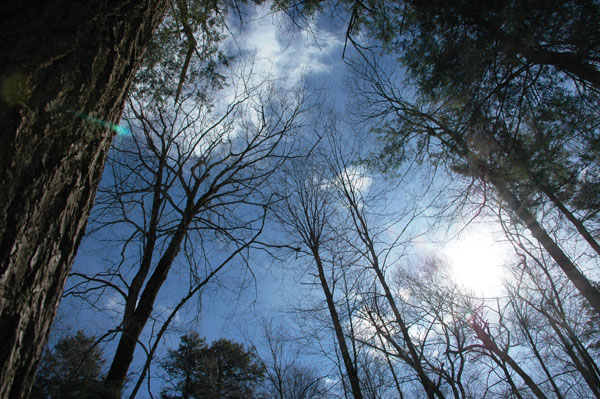
“The Closest Thing to Chestnut Blight”
With increasing global trade comes increasing global pests. The recent report Fading Forests (co-authored by the Conservancy’s Faith Campbell) found 28 new invasive species devastating forests in the past 12 years.
For conservationists, it can feel like forests are under siege. Always a new pest threatening to devastate trees.
This is not a new threat in eastern forests: after all, chestnut blight rendered the American chestnut functionally extinct.
The emerald ash borer could prove to be an equally devastating pest. “It is the closest thing I’ve seen to chestnut blight,” says Don Eggen, Division Chief of the Forest Pest Management Division for the Pennsylvania Bureau of Forestry. “I don’t think the emerald ash borer will completely eliminate ash trees, but there’s going to be a lot less of it for a very, very long time.”
The emerald ash borer is a green beetle native to Asia and Eastern Russia. It was first documented in the United States in Michigan in 2002, believed to have arrived in wooden shipping crates.
As its name suggests, the ash borer’s larva does bore into the ash tree’s bark, and effectively girdles the tree.
Many forest pests can be treated even after an infestation has occurred. The hemlock woolly adelgid, for instance, can be controlled with pesticides and bio-control after it is found in hemlock trees.
Not so the emerald ash borer. Once it is in a stand of trees, it is very, very difficult to control.
The Pennsylvania Bureau of Forestry is selecting 3400 trees for protection around the state, focusing on areas far from where the ash borer has reached. The agency is also collecting seeds to save until a time comes when the trees can be planted without threat from the emerald ash borer.
“It has to be very targeted,” says Eggen. “We’re focusing on the conservation of genetics of the ash and treating individual trees.”
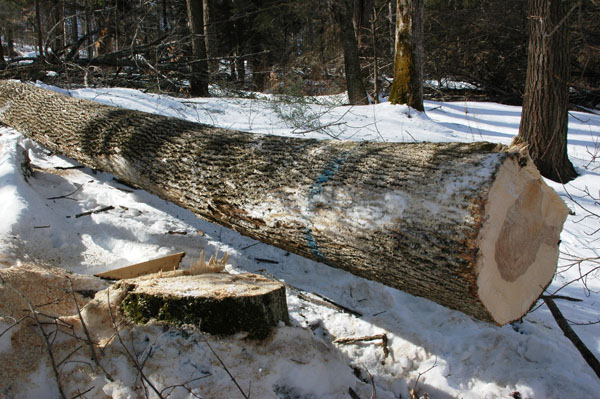
“We Knew It Was Coming”
But that approach only works in areas free of the ash borer. Woodbourne Forest Preserve was near other infestations. Staff there knew it was only a matter of time before it arrived at the preserve. It was already too late to stop.
“We knew it was coming” says Mike Eckley, conservation forester for The Nature Conservancy in Pennsylvania. “By the time you find emerald ash borer, it’s too late. You can’t put chemicals into the tree, because the tree is girdled and there’s no place for the chemical to go.”
Ash has commercial value. One idea would be to harvest trees that were going to die anyway, and use that funding to save imperiled hemlocks.
“You have multiple forest pests causing major problems, and they’re expensive to control,” says Eckley. “Which problems do you focus on? Where do you put your limited funding? You have to focus on where you can make the most difference. We can make a difference for hemlocks. We can’t for ash trees.”
To some, it might sound defeatist – to essentially write off hopes for protecting a tree species. To others, it’s practical.
But these are tough decisions, especially at a preserve with a strict no logging policy. A policy that could only be undone in an extreme situation.
A Woodbourne preserve committee, consisting of neighboring landowners and committee members, has to decide on any potential management action, and they must determine it is the only option.
“We showed them clearly why we were proposing what we were proposing,” says Eckley. “It was still controversial. One committee member left. But most understood that this was an important decision to make.”
It was a decision based on ecology. Ash provides great habitat but other tree species can serve the same function.
“No other species can take the place of hemlocks,” says Eckley. “It’s foundational to the ecosystem. We would have had very low success in treating ash, and the ecological return would not be as great.”
Why not wait until ash trees are infested and then cut them?
Ash trees quickly lose all value when infested with ash borers. “When you fell trees that were hit with ash borers, they basically split and disintegrate when they hit the ground,” says Scott Sienko, a third-generation logger who conducted the ash harvest on Woodbourne. “If you catch it before the tree starts to deteriorate, you can still get a little value out of the tree. But it is a very narrow window.”
The committee approved the ash harvest, which was completed in March. Not all trees were cut. Conservancy staff established a core area where dead trees would pose a hazard to roads and high recreational use areas.
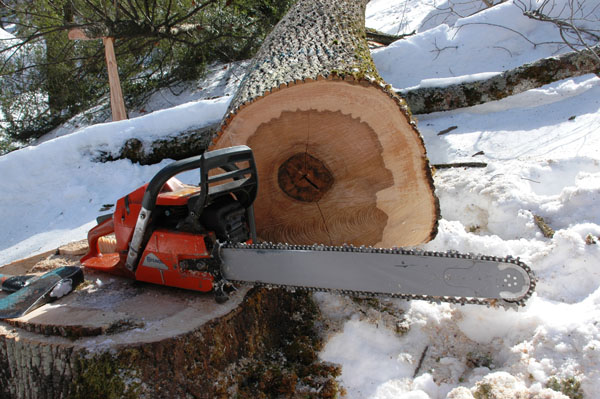
“A Gut-Wrenching Decision”
Some might consider it a gamble. What if the emerald ash borer never showed up at Woodbourne?
That proved to not be the case. The forest pest was confirmed in two trees that were logged. It was already there – the first found in that county.
“I wasn’t at all surprised,” says Sarah Johnson, GIS conservation specialist for the Conservancy. “We have been searching for it, knowing it was coming. But it can be a very difficult pest to locate.”
“If we had waited five years, the trees may not have any value,” says Scott Sienko.
Still, it was difficult for many conservationists to see the logging trucks at Woodbourne. Even for staff, it was a tough moment when the ash borer was confirmed there.
Sacrificing one tree to save another: this is the reality that many conservation managers face.
“We’re scientists. We’re practical and we understand forest ecology and invasive species,” says Johnson. “Still, it can be very emotional. You know it’s going to get there; you know it’s going to have consequences. But it still hits you in the gut.”
Jerry Skinner has lived at Woodbourne as preserve naturalist for 24 years. He’s led school groups and citizen scientists. He’s documented moths and songbirds and dragonflies.
He knows forest science well – he teaches ecology at a local college. But it was an emotional moment to see the logged forest.
“You’d drive along and see those cut trees, and just have to remind yourself of the reality,” he says. “Those trees were going to die anyway. Still, to make the decision to be proactive was a gut-wrenching decision. It really was.”
Sacrificing one tree to save another: this is the reality that many conservation managers face. They must look at the science, look at the ecology, look at the costs.
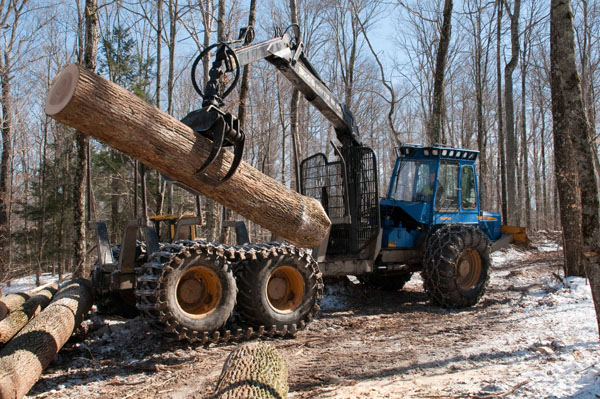
It can seem a harsh accounting, to accept that not everything can be saved. But a savvy conservation scientist can focus on the big picture: to ensure a healthy forest for generations to come.
“Given the circumstances, this was a high-quality outcome,” says Eckley. “We maximized financial return on the situation, while reducing liability to people and enabling us to better fund hemlock conservation. We weren’t giving up on ash trees so much as doing what was best for Woodbourne.”
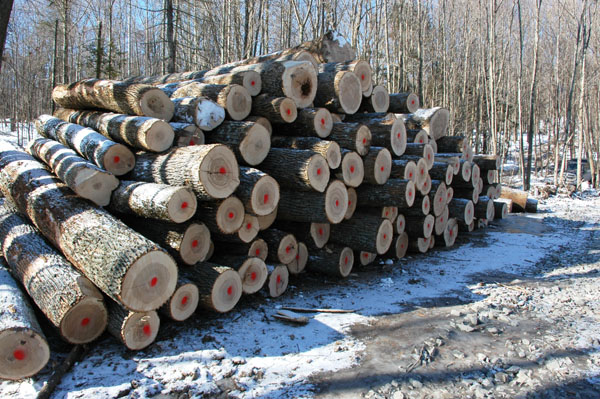
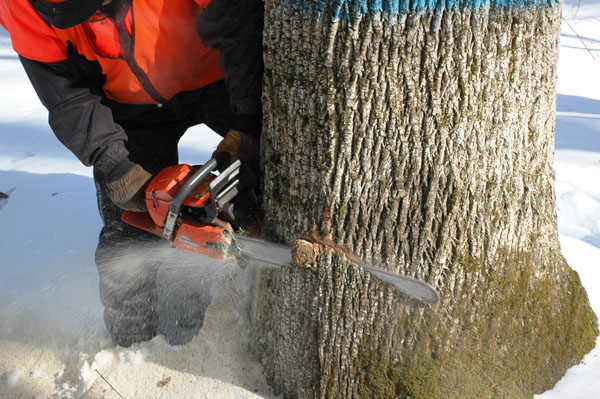



On the face of it, doesn’t the logging of un-infested ash trees and selling “those trees for lumber before the pest arrived” resemble what happened to the American chestnut? Perhaps if folks had left more chestnuts standing, we might have identified some blight resistant individuals. No one can be certain that “trees are doomed” until they fall. Not condemning, just food for thought.
Hi Anne,
Thanks for your comment. Not all of the ash trees were logged — only those near roads and recreation areas that were also a liability if someone got hurt. There are still ash trees at Woodbourne, so it’s not like the chestnut situation.
Thanks for this blog, Matt, about the ash in Woodbourne, a special place to me indeed! I understand that research on genetic modification of Fraxinus is proposed or perhaps underway. Why not GM on the EAB itself? Fair enough, I say, and the reproductive rate should be more favorable for a quick dissemination!
Hi Eunice,
That is an interesting idea. I think more solutions like this will be found for invasive species issues. Right now, I suspect the legislative/PR hurdles of genetically modifying a pest species are extremely steep, to put it mildly. But I suspect in the future it will become a viable idea.
Matt
I am a “Conservation Forester” and these “gut wrenching decisions” have been part and parcel of my 27 year career and training. I find it reassuring that after a major split in conservation over the past 50 to 100 years there is increasing convergence, at least in practice. “Sacrificing one tree to save…” what we value in the forest is the practical reality of life. What if every tree was going to die…eventually? Would that change our decisions? Oh yeah, they all die eventually. And of course dead trees have great value as they stand and decay, which must be recognized. And harvesting has other impacts, to the soil, etc. Some beneficial, some detrimental. But so does doing nothing. Stewardship requires care, balance and sometimes gambles. Thanks TNC for your Stewardship example and thanks Matt Miller for highlighting it.
In response to questions posed by Ted & Rex:
Woodbourne’s forest conditions have been well documented. The donor’s daughter, Theodora Cope obtained an M.S. from Cornell University by writing her thesis entitled ‘Some observations on the vertebrate ecology of a Pennsylvania Mountain Farm’ which was the first comprehensive ecological inventory performed throughout and adjoining the Woodbourne Preserve in 1932. Once the property was donated to the Conservancy, its first Preserve Naturalist produced a similar report completed in 1979. Then in 1981, a Master Plan was written defining processes for using the Preserve for education, observation, science and research. At some point between 1981 and 2007 the Pennsylvania Natural Heritage Program documented 4 rare plant species as having persisted within the wetland area; now fully submerged by beaver ponding. In 2012 Conservancy staff inventoried the Preserve to quantify current forest conditions and assess threats that Matt covers within his blog series. The 2012 inventory indicated that White Ash accounted for roughly 12% of the total number of trees per acre within the second-growth forest. On average there were 150 to 230 trees per acre that are 6 inches in diameter or larger. Approximately 600 white ash trees were selectively removed from within 42-acres of the Preserve’s second-growth forest. Half of the trees removed were of sawtimber size (12+ inches in diameter at breast height) and the other half pulpwood size (6-10 inches in diameter at breast height). The inventory detected an average of 8-10 snag trees per acre throughout the second-growth forest averaging 12 inches in diameter or larger. Recent (2014) field observations within both the Old Growth and Second Growth forest portions of the Preserve show a rapid increase in recruitment of snag trees and coarse woody debris. The long-standing members making up the Woodbourne Committee are passionate birders who are helping the Conservancy to monitor habitat changes and responses through annual bird counts. The USDA Forest Service Northern Research Station is also helping to monitor ecological effects at the Preserve through our partnership in Hemlock Conservation
(www.fs.usda.gov/detailfull/allegheny/home/?cid=STELPRD3791474&width=full).
Hi Rex,
I’m a Conservation Forester with The Nature Conservancy in Virginia. I did not directly work on the ash salvation operation in Pennsylvania, but I did have an opportunity to learn about it from our staff there and offer my opinion before the operation began. Typically before any harvest on TNC controlled property a thorough pre-harvest plan is prepared. The pre-harvest plan will describe the objectives of the harvest, identify any general concerns, address Threatened and Endangered Species concerns, identify stakeholder concerns, among several other items. Additionally in this case approval was given by the Woodbourne Neighbor Committee, likely the stakeholder group with most at stake. As mentioned in the blog post, the salvage operation only occurred in areas where large dead trees would be a hazard and would likely need to come down once dead anyway. This amounted to less than 10% of the entire property acreage to be salvaged, leaving over 90% of the property in the “do nothing” category. Ultimately the decision to do nothing on most of the property will result in many dead ash snags, while the revenue generated from the salvage operation should result in a few less dead hemlock snags. Arguably a good outcome.
I put much thought and consideration into any timber harvest I’m involved with, and carefully consider what’s best for the forest given our objectives. I’m sure the Pennsylvania Chapter operates under similar principles.
Biologists are documenting the necessity of dead trees and dead limbs on live trees as required habitat for woodpeckers and secondary nesters. I described the Nature Conservancy’s approach to the ash borer invasion that is opposite the advice of biologists. My story in https://birdsnews.com contrasts your approach with the advice of biologists who are noting the increased abundance of woodpeckers even on golf courses that leave dead trees standing.
Has the Nature Conservancy done an environmental assessment of its ash logging — something it has demanded of other logging operations, that like itself seek only to have a “maximized financial return?”
Mr. Graham, I think that your concern about dead trees as woodpecker habitat would be more valid if all of the ash trees were being logged. However, the author states in the article and in his reply to another comment that “… not all ash trees were cut”, only those that could be dangerous to the public after they died. My take: let one of those dead ash trees fall on somebody’s car, and you’d see more liability lawyers in the vicinity in a week than EAB larvae.
It occurs to me that there will still be plenty of dead (ash) trees left in the non-public areas, as well as plenty of dead limbs on live (non-ash) trees throughout the Preserve, to serve as habitat for the woodpeckers and secondary nesters. As far as dead limbs on live ash trees are concerned, my understanding is that there won’t be any of those, as once the EAB infests the tree, the whole tree dies.
It also occurs to me that, as alluded to in your article, there is a good possibility that any such increased abundance of woodpeckers would be short-lived as the number of available EAB larvae decreased over time. If that were to be the case, what difference would there be in the long-term benefit to the survival of woodpeckers between a short-term increase in population of, say, 2 percent, and, say, 20 percent? (I just picked those numbers out of the air, as I don’t know have the data or know the methods that one would use to predict such an increase.)
Having said that, it _would_ be helpful to know an approximation of what percentage of doomed ash trees were logged in the Preserve. Also, I think you have a good point about asking if an environmental assessment was done or not. Sauce for the goose and all that.
This seems like basic common sense. It’s sad that it has to masquerade as “controversial.” Great job TNC.
Hi Vincent,
Thanks for your comment. Excellent point. In this case, not all ash trees were cut — only those close to roads & high recreation areas. This was done to raise funds and to reduce liability.
The Pennsylvania Bureau of Forestry is doing excellent research on EAB resistance and gathering as much genetic material as possible.
You may also be interested in my story on elms resistant to Dutch elm disease: https://blog.nature.org/2013/06/04/american-elm-tree-restoration-genetics/
Thanks again for writing!
The parallels between chestnut blight and emerald ash borer are, indeed, strong.
The USDA advised farmers to cut their chestnut trees in advance of the blight, to salvage the timber, just as the Nature Conservancy is doing now with ash trees.
However, some breeders working on restoring the chestnut tree consider that USDA advice to have been a mistake because it prevented us from observing which trees had a genetic resistance to the blight and which did not.
Wouldn’t the same be true of ash trees: some ash trees are surely more resistant to the advances of the emerald ash borer than others, and leaving as many trees as possible standing to observe them is the only way to gather that data.